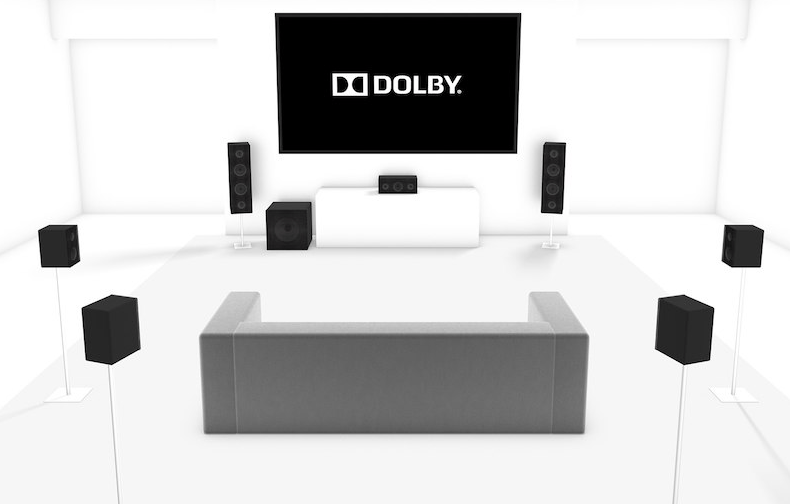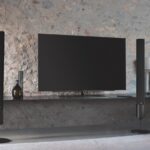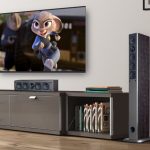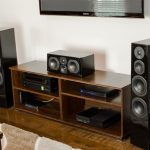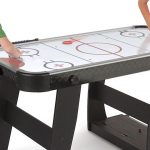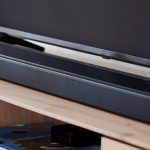Figuring out the best speaker placement for 7.1 home theater systems can be confusing. Speaker placement can make or break the perfect movie and theatre experience. Picking the right speakers for your home, swallowing the cost of all the proper gear, and getting everything back to your house is hard enough. If you end up putting those babies in the wrong place when setting up your system, it’s just as bad as buying cheap gear in the first place. Why bother?
Now that you have a great home surround sound system, why not find the best placement for your speakers? That’s why we’re here. Read on for tips to get your 7.1 home theater speakers in the perfect positions for the ultimate home surround sound experience.
Table of Contents
Getting to Know Your 7.1 Surround Sound Speakers
There is a lot of gear that goes along with a surround sound system. All pieces serve a purpose, but there’s still a hierarchy, with speakers coming in as the crowning glory. Your speakers are the most important parts of any home theater system. Without these, there’s no sound, of course.
But their placement is just as important as their mere existence. Their purpose is right in the name. They surround the listener in the sound of movies, games, and music to bring a more complete and enveloping experience. You can’t just toss them any old place and expect awesome results. Home theater surround sound speakers are designed to work in unison and in specific configurations for precise audio control.
Depending on your models and the attributes of your room, you’ll need to make some adjustments as you go along to ensure your speakers are facing the right way, set at the proper angles, and maximizing their projection. That’s a lot simpler than it sounds if you follow this guide.
Speaker Types and Positions for 7.1 Home Theater Surround Sound
A 7.1 home theater surround sound system has 7 positional speakers and a subwoofer, making 8 total speakers on 7 audio channels. These speakers come in 4 main types. Each speaker type serves a specific purpose in the overall configuration. Lose one and it throws off the entire soundscape you’re trying to create.
Confused yet? Hang in there! We’ll explain it all before you have to move a single speaker.
The Center Channel Speaker Goes in Front
The center channel speaker produces most of the dialogue for movies or watching television. We need clear voices to truly enjoy our shows, but the position of this speaker would make it difficult to use if it was shaped just like the other speakers. That’s why center channel speakers are usually long and flat, making their front positioning much more user-friendly and unobtrusive.
Ideally, these speakers would go in front of the viewer, below the television, but at ear level. If that’s not possible, mounting the center speaker above the television can work, too. As long as the center channel speaker is in front of the viewer, you can simply angle it up or down to point directly at the main viewing location.
The Front Left and Front Right Speakers Go on the Sides
The front left and right speakers are often referred to as “mains”. The mains look and act much like typical stereo speakers you usually see to the left and right of a stereo receiver.
The front left and right speakers are responsible for most of the music and audio effects for movies, shows, and games. You’ll hear explosions, background music, and footfalls, for example. You may also hear some of the dialogue from these speakers, especially positional dialogue—for example, someone off-screen may be heard through a left or right main.
Put the front left and front right home theater speakers about 3 feet from the sides of the television, in front of the viewer, and at ear height. Tower speakers can manage this on their own, while bookshelf monitors may require stands. Sound projection can be further improved by keeping the front left and right mains away from the room corners to decrease any boundary reflections.
If you’d like to be precise, angle your front left and right mains about 22 degrees to 30 degrees. They should turn slightly inward, toward the viewing position.
The Surround Speakers Go Beside the Viewer
This is where a lot of people screw up their home theater speaker placement. Because there are so many speakers in a 7.1 surround sound system, it gets confusing after the first three.
The left and right surround speakers are not the same as the left and right surround back speakers. These two should never be behind the viewer. They go directly on the sides of the viewing area. Try to place them as close to 90 to 110 degrees to the sides as possible. They need to be about 2 feet above ear level for the best ambiance.

If You Are interested, Read Our Article About
Best Subwoofers for Home Theaters: Our Top Picks
The Surround Back Left and Right Speakers Go Behind
The back surround speakers were introduced in the 7.1 surround sound system. They were designed to go behind the listener, at approximate ear level, and in line with the two front speakers. For best results, turn these speakers at a slight angle to direct the sound toward the back of the viewers’ heads.
The Subwoofer Can Go Anywhere
Arguably the most fun of all the speakers in a 7.1 home theater system, the subwoofer can be placed just about anywhere. These speakers are omnidirectional. That means the sound comes from all sides and can be projected in a number of ways.
The only caveat to the placement freedom of a subwoofer is the need to keep them out of corners. If you shove a subwoofer into a corner, even a shallow one, you’ll get a lot of blowback sound. This creates a muffled, muddy sound that can ruin the ambiance.
The final placement of the subwoofer is a personal choice. Try it behind the main seating location first. If you’re not happy with the sound, try moving it below the television. While it can be placed to either side of the viewing area, it won[‘t produce the same kind of balance, so be warned.
You can place a subwoofer on the ground, but you can run into the same muddy, booming blowback you’d get with corner placement. Try to keep the subwoofer off the ground if at all possible.
Is 5.1 or 7.1 Surround Sound Better?
This is entirely up to you. Consider your available space, your neighbors’ proximity, and your overall sound goal for your home theater set up.
- 5.1 works best in smaller rooms while 7.1 is suited for larger ones.
- 5.1 systems are cheaper than 7.1 systems.
- 5.1 is suited for industry-standard DVDs and video games whereas 7.1 is perfect for Blu-rays as well as PS3, PS4, and X-Box One games.
- 5.1 supports Dolby Digital and DTS formats while 7.1 supports Dolby TrueHD and DTS-HD Master Audio.
- 5.1 offers basic surround sound while 7.1 gives a better sense and perception of depth.
7.1 Speaker Placement in Smaller Rooms
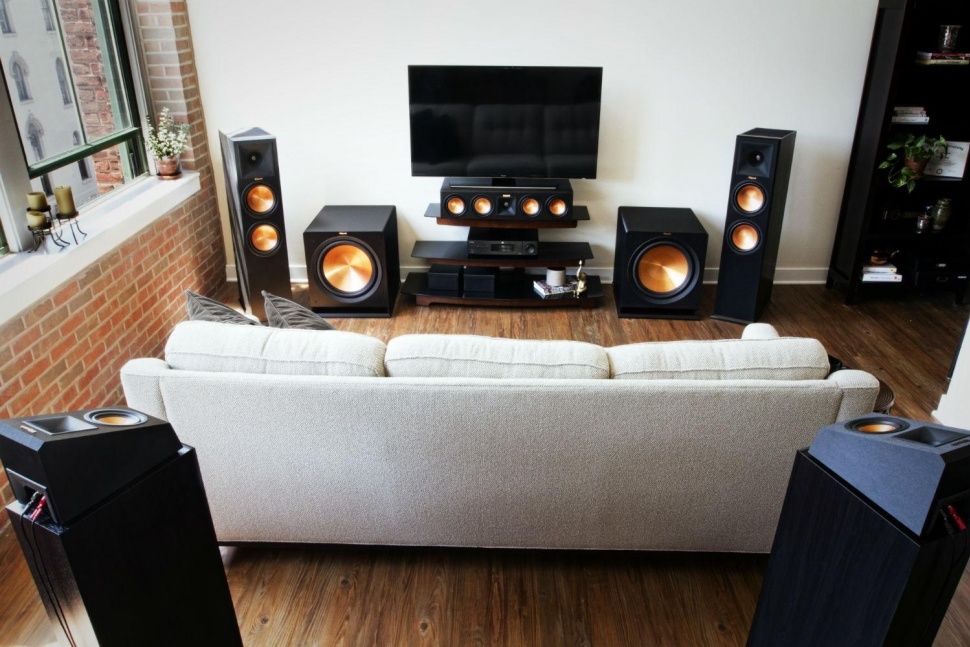
It is possible to set up a 7.1 surround sound system in a smaller room, but you’re not going to get the same results. You’ll need to be creative and probably add some new hardware for best results.
- Get standing mounts to keep along the couch sides
- Mount your tweeters on a wall not adjacent to any apartments
- Use monopole speakers
- Use bipole speakers
- Go for stereo
According to most 5.1 surround system users with similar space issues, you should mount monopole speakers along the sides of the couch. Maintain as much distance between the speakers and couch sides as possible. This will help keep the direct audio comfortable enough for people seated on the couch ends.
Wall-mounting can help in some situations. However, in apartments, it won’t really help fix the problem since the subwoofers easily sound through walls. Dipoles also don’t do much for a couch that is flat against the wall since the sound has to reflect your hearing position.
Monopoles should be mounted between 90 and 110 degrees for the best audio projection. Keep your surround left and right speakers about 6 inches above ear height. Tuck your left and right surround back speakers behind the couch if you can, though this is not ideal as the sound will be muffled and the speakers won’t be able to behave as designed.
Tilting monopole-mounted speakers upwards will help diffuse the sound and give a more natural projection.
Can You Put Surround Sound Speakers in the Ceiling?
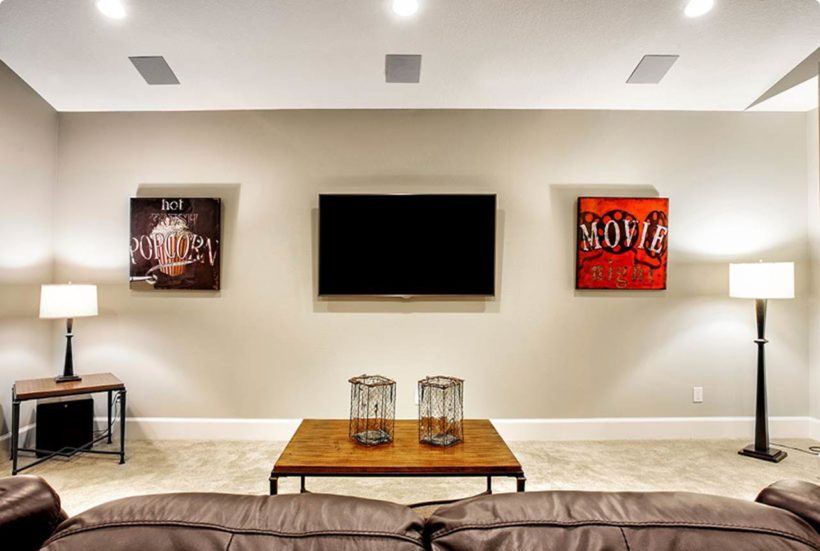
Honestly, you can put surround speakers wherever you want, but the resulting sounds might not be exactly what you hoped for. With some trial and error, you’ll find the right locations, but here are some tips for ceiling mounting.
In-ceiling surround sound speakers allow you the benefit of rear sound as well as side channels with clear diffusion even when your room is not perfect. Made with space-saving in mind, the sound projection is impressive.
These surround speakers give improved audio quality, work better in modern homes focused on energy efficiency, and provide the benefit of indulging in surround sound even in the toughest of rooms. So, can surround sound speakers be mounted in the ceiling? The quick and precise answer is yes.
Some Final Words on 7.1 Surround Sound Speaker Placement
Placement is vital to an enjoyable home theater system. From the television to the receiver to each speaker, everything should be perfectly and precisely placed to maximize your space.
That said, please be aware that your space matters almost as much as your equipment. That means you’ll need to understand how sound moves in your home theater so you can make the necessary minor adjustments to your speaker placement.
You’re not likely to get perfect placement on the first try. We suggest taking the day to set everything up. Schedule in some trial times and watch a movie or a show between adjustments. Take notes as you go along. How does the bass sound? How does the dialogue sound?
Sit in different positions and see how the projection changes. Is it too loud on the left or right? Does the sound become muddy if you’re leaning forward or lounging back?
Taking your time at this stage and putting in the work of angling and moving equipment will pay off in the long run.
Conclusion: Get the Most out of Your Surround Sound Speakers!
Sound quality and projection is just as important as the viewing experience with any home theater system. The best speaker placement for 7.1 home theater systems involves using optimum positions, height, and angles to ensure you get the most out of your surround sound speakers.
With this guide, you should have a pretty good idea what each speaker does, where it should be positioned, and have some ideas how to angle yours properly.
Have any tips for our readers? We’d love to hear from you!
3 Great Home Theater Systems You Can Buy Right Now
Image Credit: dolby.com / digitaltrends.com / bassheadspeakers.com
Last modified:

